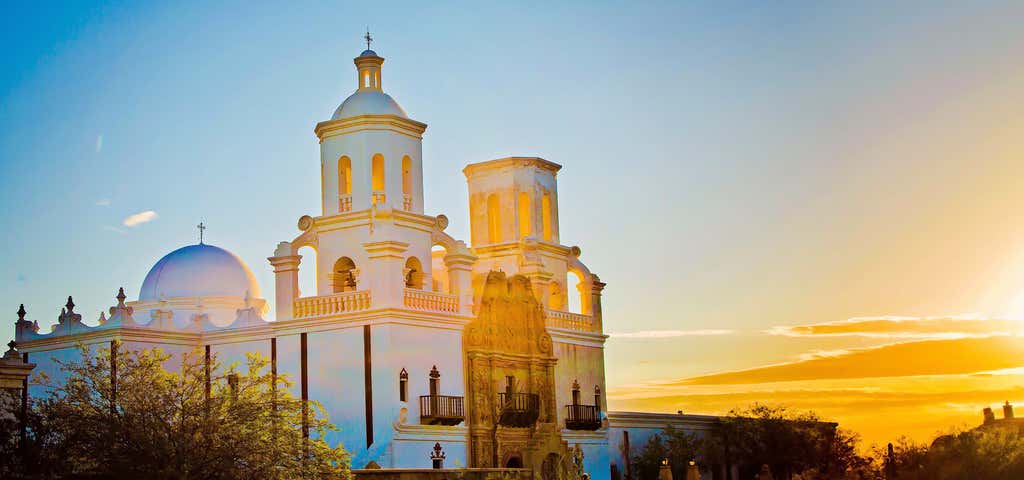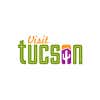The city of Tucson has an exceptionally long and rich history. From the Hohokam Indians, who called the area home until 1450, to the Jesuit missionaries, who founded the Mission San Xavier del Bac in 1700, to the first settlers who came after the U.S. purchased Tucson from Mexico in 1854, a wide range of people have made their mark here. This alluring desert city still lives up to its reputation as a cultural and arts hub—it's got gorgeous churches, famous hotels where outlaws once slept, and mysterious caves deep underground.
Arizona State Museum
Come face-to-face with the past at the Arizona State Museum, the Southwest's largest and oldest anthropology museum. The museum houses over three million artifacts relating to ethnology and archaeology, all of which combine to tell the story of the native cultures that once called Tucson home. In addition to being the largest anthropology museum in the Southwest, the Arizona State Museum also has the world's largest collections of Southwest Indian pottery and American Indian basketry. And since the museum is run by Arizona State University, there's no shortage of books, lectures, and events to help visitors learn even more and go even deeper into the past.
Pay tribute to Tucson's culinary heritage with a stop at El Charro Cafe. The same family has been running El Charro since 1922, making it the oldest family-run Mexican eatery in the country. As if that didn't make it iconic enough, this restaurant is where the first chimichanga (essentially a deep-fried burrito) was served. El Charro even offers "mini chimis" as appetizers, so there's no excuse to not try one. The menu also includes all-day breakfast, signature "Charro-style" tacos, a variety of vegan and veggie-friendly options, and a collection of delicious margaritas.
Tucson Museum of Art
There's no better place to let the past inspire you than at the Tucson Museum of Art. The museum itself maintains an impressive collection of pieces from across time and space, with focuses on Latin America and the American West. In addition to the main contemporary building that houses all of the art galleries, there is also an entire city block of historic homes to explore. Some of these home have been turned into galleries, studios, even restaurants. It makes discovering all that the museum has to offer an even more memorable experience.
If you want to step foot in the true heart of Tucson, then make sure a visit to the Presidio San Agustin del Tucson is on your itinerary. Originally built by Spanish soldiers during the 18th century, this small fortress was the founding structure of what ultimately become the city of Tucson. It remained a Spanish garrison until the Americans came to Tucson in 1856 and slowly disassembled it. Today, thanks to some incredible work by local archaeologists and historians, the site has been preserved and visitors can now see some of the fortress' original remains and artifacts. Admission costs $5 and hours vary throughout the year so be sure to check the website before you stop by.
Hotel Congress
In addition to being a popular filming location for Old Western movies, Tucson also happens to have some real-life Wild West history—much of which took place at the Hotel Congress. It is here, in 1934, where famed bank robber and American gangster John Dillinger was captured after he asked a fireman to save his belongings when the hotel caught fire. Gangster history aside, Hotel Congress offers the perfect blend of historic charm and modern convenience. Plus, the onsite music venue, Club Congress, hosts some of the best musical acts in town. And don't forget to check out the famed Tap Room, an authentic, cowboy-watering-hole-type joint.
Another great place to get a sense of Tucson's unique culture is at Mission San Xavier Del Bac, which also happens to be the oldest intact European structure in Arizona. The Catholic church at Mission San Xavier Del Bac was founded in 1692, and the building itself was completed in 1797. The Spanish Colonial architecture (complete with Moorish domes and white stucco) and ornately detailed decorations speak to the Spanish, Mexican, Tohono O'odham, and American influences that Tucson has adopted throughout its history. The mission is still run by Franciscans, and is open for daily tours when it isn't being used for local services and events.
Colossal Cave Mountain Park
Colossal Cave Mountain Park is not just a stunning place filled with activities, it's also rumored to be the site of lost treasure. Back in the day, bandits and outlaws used to hide out in these underground caverns and tunnels. One group in particular used the caves as a home base after a string of train robberies. And even though most of the group was eventually captured, the whereabouts of their stolen money was never discovered. Today, there are different tours you can take to explore the caves, ranging from smooth and steady walking tours to more extreme nighttime ladder tours. And since the rest of the park offers gold panning, horseback riding, camping, and hiking, you can really get in touch with your inner Wild West outlaw here.
Tucson's culture is clearly powerful. It's in the food, the architecture, the art, even the local residents’ sense of identity. You can taste it, see it, hear it, smell it, and sometimes even feel it as you explore. Learning about the events and stories that helped create this unique atmosphere is the perfect way to better understand and fully appreciate how special Tucson really is.
Banner Photo Credit: Flickr/Cindy Devin
Visit Tucson
Tucson (pronounced TOO-sawn) is the second-largest city in the state of Arizona, with nearly one million residents in the metro area.









